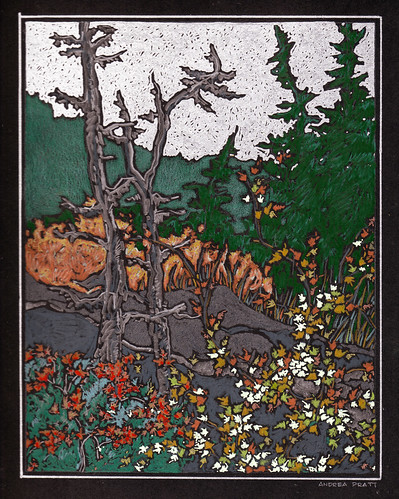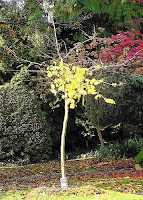For those of you (especially if you live in Winterpeg) who got all freaked out at my mention of winter last post, rest assured it's still fall ... for now.

The above drawing comes from a photo I took at Lindeman Lake a year ago. This photo was taken the same day.  As you can see, Zappa and our friends' Lab, Simon, had endless fun that day as only two goofy boydogs can. Less than three months later 10 year old Zappa was dead from cancer. Three days ago I drew this picture and within 24 hours Simon, only eight years old, also died of what looks like the same form of cancer. I like to think they're in doggie heaven now, playing humping games to their hearts' content.
As you can see, Zappa and our friends' Lab, Simon, had endless fun that day as only two goofy boydogs can. Less than three months later 10 year old Zappa was dead from cancer. Three days ago I drew this picture and within 24 hours Simon, only eight years old, also died of what looks like the same form of cancer. I like to think they're in doggie heaven now, playing humping games to their hearts' content.
But back to winter and the short, dark days of SAD-generated slumps here on the Pacific Northwest coast. Today was a preview, standing in the pouring rain for our local Remembrance Day service. It was a sobering moment for many reasons. I don't suffer from SAD, but I have my own struggles with an unusual form of depression so it got me thinking of the months ahead and how to keep the lid clamped tightly shut on that sneaky devil. Naturally, the link between creativity and mental illness (or, more melodramatically, 'genius and madness') is a favourite theme with me, and I recently came across this article by Hara Estroff Marano. It basically pooh-poohs the idea that madness can actually cause creativity by explaining that being successful in a creative field actually requires a lot of hard graft:
Discipline is not a hallmark of minds in the throes of emotional distress. "Despite the carefree air that many creative people effect," says Csikszentmihalyi, "most of them work late into the night and persist when less driven individuals would not."
Marano has some interesting insights that nevertheless explain the prevalence of depression amongst crazies like us:
...some forms of emotional distress are more common among writers, artists and musicians. Serious depression strikes artists ten times more often than it does the general population. The link, however, is not creativity. Artists are more likely to be self-reflective and to ruminate, to mull things over. And that thinking style—as opposed to creativity itself—is a hallmark of depression and commonly leads to it.
So that's the theory on what causes high incidents of depression amongst artists from The Inside, but feedback from The Outside can also play a role apparently:
It's entirely possible, Weisberg notes, that the elevated rates of mental disorders among artistic geniuses comes about as a result of the creative lifestyle, which hardly provides emotional stability. Many artists struggle against poverty and public indifference in their lifetime. And if they do indeed produce works that are acclaimed, they could succumb to the overwhelming pressure to live up to their earlier successes.
Just reading this reminds me how long it took for me to admit in public that I was no longer a teacher but now one of those penniless freaks who inhaled paint fumes in my basement. But now: yes. Life is good. 70 Louisa Street 16" x 20"
70 Louisa Street 16" x 20"


















